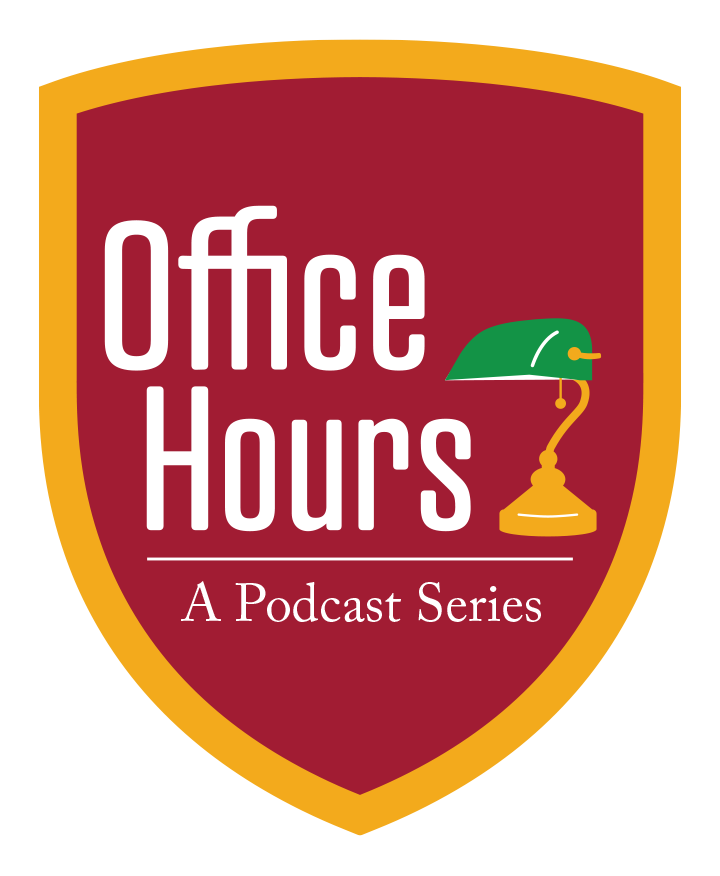Land Acknowledgment
Office Hours Land Acknowledgement
We, at Office Hours, recognize that the Great Lakes woodland region of Turtle Island, today colonized as “Canada,” has been home to numerous Indigenous Nations for over 10,000 years, including the Anishinaabek, Haudenosaunee, Lūnaapéewak, and Chonnonton Peoples. Huron University is located Baketigweyaang (at the side-flow) alongside Deshkan Ziibiing (Antler River, AKA the Thames). This sacred life force flows through the heart of the lands and territories of the place called Southwestern Ontario and connects many First Nations and settler-communities to the settler-city known as London, Ontario.
This region is connected to the following Wampum agreements: Gdoo naaganinaa (The Dish with One Spoon Wampum) and the Kaswenta (Two Row Wampum); as well as the Nanfan Treaty of 1701 and the Treaty of Niagara (1764). The City of London occupies land via Indigenous-Crown Treaties, which include the London Township Treaty 6 (1796), Sombra Township Treaty 7 (1796) and the Longwoods Treaty 21 (1822). The three First Nations communities in closest proximity to Western and Huron are: Deshkan Ziibiing Anishinaabek (Chippewas of the Thames First Nation); Lunaapéewak (Munsee-Delaware Nation); and Onyota’a:ka (Oneida Nation of the Thames).
By acknowledging the historical and contemporary relationships Indigenous Nations have with the land in the London area, Office Hours affirms the ongoing presence of Indigenous Peoples on this land, their inherent rights to self-determination, and the ongoing tensions and violence they experience as a direct consequence of Canada’s colonial systems. We must also recognize Huron University’s historic complicity with the residential school system which prevailed for over 150 years. These institutions existed to erase Indigenous cultures, languages, and lifeways, splinter families from one another, and claimed the lives of 1000s of children. For these reasons, we have a responsibility to learn about the past and present reality of colonial structures and processes, acknowledge our positionality and privilege, and accept the great discomfort and efforts that decolonizing work calls all of us to contribute to.
The work of Office Hours brings together individual researchers of many different backgrounds, each with different relationships to this land and this history. Within these differences, we acknowledge that because of our positions as researchers in an academic setting, we are all part of colonial institutions both locally and globally. We encourage you to consult the following information in order to learn more about the lands that Huron occupies and stay abreast of indigenous news and resources.
Local Indigenous News and Resources
Aboriginal Multi Media Society (AMMSA)
The Aboriginal Multi-Media Society of Alberta (AMMSA) is a news and communications society dedicated to serving the news and information needs of Indigenous people across Canada. Visit AMMSA to gain access to the archives of numerous independent and indigenous publications, including Windspeaker, Ontario Birchbark, Saskatchewan Sage, Alberta Sweetgrass, Raven’s Eye, and Buffalo Spirit
Aboriginal Peoples Television Network (APTN)
APTN launched in 1999 as the first national Indigenous broadcaster in the world. Since then, the network has become a global leader in programming that celebrates the rich diversity of Indigenous Peoples across Turtle Island and beyond
A pdf archive via the Anishinabek News website of the Anishinabek News printed editions dating back to 1993
First Nations Drum
Was Canada’s largest Aboriginal newspaper, reaching communities all across the country. Distributed to Native Bands, Friendship Centres, Tribal Councils, Schools, Colleges and Universities, Libraries, various aboriginal businesses and organizations from east to west. Unfortunately, due to a lack of resources, Inuvik Drum has shuttered its doors
Nuu-chah-nulth news and perspectives
Indigenous Newspapers in North America
Covers a range of communities, with an extensive list of periodicals produced in the United States and Canada, including Alaska, Arizona, British Columbia, California, Nevada and Oklahoma, from 1828 to 2016
Laotsyá:n is published three times a year by the Office of Indigenous Initiatives at Western University
The Micmac News (1965-1991) is an important example of Mi’kmaw print culture; it was created by Roy Gould in Membertou First Nation in 1965. Initially, the paper covered only the Mi’kmaw communities in Unama’ki, or Cape Breton. However, by March 1972 circulation was approximately 5,000 and united Indigenous communities across Mi’kmaki
National Heritage Digitization Strategy Pilot Project
In 2017, the National Heritage Digitization Strategy (NHDS) embarked on a project to learn more about newspaper digitization in Canada and to add digitized titles to the national collection. Ultimately the the digitized issues are from Windspeaker (1986-2015), Ha-Shilth-Sa (1974-2017), Turtle Island News (2001-2013) and Nunatsiaq News (1976-78). Together, these collections represent more than 80 years of Indigenous news publishing
Turtle Island News is Canada’s only national native weekly. It is published by a politically independent media and publishing company owned by aboriginal people
